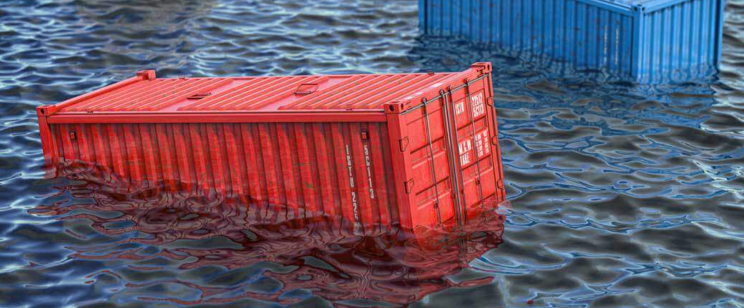The maximum amount a freight forwarder will compensate for loss or damage to goods is actually based on the weight of cargo they are carrying for their client. Freight Forwarder’s Liability’s limit is usually $5 per kilogram. This limit is commonly found in international shipping and is often dictated by conventions such as the Hague-Visby Rules, the Montreal Convention, or specific terms set by the freight forwarder.
Here’s a detailed breakdown:
1. Legal Framework and Conventions
- Hague-Visby Rules: These rules apply to sea transport and set a liability limit of 2 Special Drawing Rights (SDRs) per kilogram. SDRs are an international type of monetary reserve currency created by the International Monetary Fund (IMF). The $5/kg limit can be a simplified version of this, adjusted to reflect current SDR values and practical application.
- Montreal Convention: For air transport, the Montreal Convention establishes a liability limit of 22 SDRs per kilogram.
2. Freight Forwarder’s Liability Insurance
Freight forwarders typically carry liability insurance, which outlines the terms under which they are liable for loss or damage to goods. The $5/kg limit is a standard term in many liability insurance policies, meaning that if goods are lost or damaged while in the forwarder’s care, the compensation will not exceed $5 per kilogram of the goods’ weight.
3. Application in Different Scenarios
- Damage or Loss: If goods weighing 100 kg are damaged, the maximum compensation a freight forwarder would pay is 100 kg * $5/kg = $500.
- Exclusions and Exceptions: Certain high-value or sensitive goods might not be fully covered under this standard limit. Special arrangements or additional insurance can then be purchased for higher-value items.
4. Negotiations and Contracts
- Customized Agreements: Shippers and freight forwarders can negotiate terms that deviate from the standard $5/kg liability limit. This is often done for high-value shipments.
- Declared Value: Marine Cargo shippers can declare a higher value for their goods, which typically requires paying a higher fee but ensures higher compensation in case of loss or damage.
5. Implications for Shippers
- Risk Management: Shippers should be aware of this limit and assess the risk of potential loss or damage relative to the value of their goods.
- Insurance Considerations: Shippers might then opt for additional marine cargo insurance to cover the full value of their goods, especially if the goods’ value significantly exceeds the $5/kg limit.
So coming back to the question whether you need to buy additional marine cargo insurance will depend on several factors, including the value of your goods, your risk tolerance, and the specific terms of your shipping contract.
Below are some key considerations which might help you decide:
1. Value of Your Goods
- High-Value Items: If the value of your goods significantly exceeds the $5/kg liability limit, purchasing additional insurance is often advisable. For example, if you are shipping electronics, jewellery, or other high-value items, the standard liability limit may not provide adequate coverage.
- Low-Value Items: For goods with a value close to or below the $5/kg limit, the standard coverage might be sufficient.
2. Risk Tolerance
- Risk-Averse Shippers: If you prefer to minimize risk and ensure full coverage in case of loss or damage, additional insurance can provide peace of mind.
- Risk-Tolerant Shippers: If you are comfortable with the potential financial risk of partial compensation, you might opt to forego additional insurance.
3. Nature of Goods
- Fragile or Perishable Items: Goods that are more susceptible to damage or spoilage during transit may benefit from additional insurance.
- Durable Goods: Items less prone to damage might not require extra coverage.
4. Shipping Route and Conditions
- High-Risk Routes: Shipping routes known for higher risks of theft, damage, or delay may necessitate additional insurance.
- Standard Routes: More secure and reliable routes might reduce the need for extra coverage.
5. Specific Terms of Your Contract
- Contractual Obligations: Review the terms of your contract with the freight forwarder. Some contracts may have specific clauses regarding liability and insurance.
- Declared Value Options: Some freight forwarders offer the option to declare a higher value for the goods, which may come with an additional fee but provide higher coverage.
6. Cost of Additional Insurance
- Insurance Premiums: Evaluate the cost of purchasing additional insurance against the potential financial risk of under-insuring your goods.
- Cost-Benefit Analysis: Conduct a cost-benefit analysis to determine if the insurance premiums are justified by the value of the goods and the risk involved.
7. Examples
- Example 1: You are shipping 500 kg of machinery valued at $50,000. The standard liability limit would cover: 500 kg×$5/kg=$2,500
In this case, additional insurance would be advisable to cover the remaining $47,500. - Example 2: You are shipping 100 kg of clothing valued at $2,000. The standard liability limit would cover: 100 kg×$5/kg=$500
Here, additional insurance might be considered but is less critical given the lower value.
Conclusion
Buying additional insurance is generally recommended if the value of your goods exceeds the standard liability limit of $5/kg. It ensures that you are fully compensated in case of loss or damage. Evaluate your specific situation, considering the value of your goods, risk tolerance, shipping route, and contractual terms, to make an informed decision.
Our advice is that if you choose to have that additional coverage, do approach an insurer direct or through brokers like us, or else the premiums going through a Freight Forwarder will have additional markups, further tearing down your profits again.


